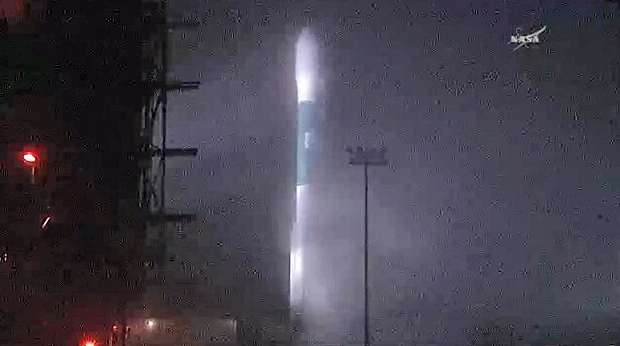OCO-2 launch scrubbed by launch pad glitch
07/01/2014 09:48 PM Filed in: Space News | Space Science
Editor's note...
CBS News
An attempt to launch an environmental research satellite atop a Delta 2 rocket at Vandenberg Air Force Base, Calif, Tuesday was derailed just 45 seconds before the planned liftoff when a valve in a launch pad sound suppression water system failed to activate as required.
After propellants were drained, engineers returned to the launch pad, identified the problem and installed a replacement valve. Launch of the Orbiting Carbon Observatory 2 satellite then was rescheduled for 5:56:23 a.m. EDT Wednesday (GMT-4; 2:56 a.m. local time). Good weather is expected.
The goal of the long-awaited $468 million mission is to measure global carbon dioxide levels, collecting data expected to shed light on how the greenhouse gas affects climate change.
A nearly identical version of the spacecraft was destroyed in a 2009 launch mishap caused by problems with an Orbital Sciences Corp. Taurus XL rocket. NASA managers decided the mission's scientific value warranted building a replacement, but the OCO-2 satellite was moved to a United Launch Alliance Delta 2 after a subsequent Taurus failure.
"It's a bit of a disappointment for the launch team when you have a great countdown up to that point," said launch director Tim Dunn. "However, these are things you prepare for, we're a professional team, we know how to handle this."
The launch pad sound suppression system is used to help dampen the acoustic shock of engine ignition and to cool an exhaust flame duct at the base of the rocket.
Dunn said water is supposed to start flowing through the system at the T-minus 45-second point in the countdown.
"There's a verification step there immediately that the engineer is looking for," Dunn said. "(He) could not verify that his water system was operating nominally, therefore that resulted in a mandatory hold."
In a statement Tuesday afternoon, NASA said the valve in question worked normally in pre-launch tests, but it "failed to function properly during the final minutes of the launch attempt."
"The failed valve has been replaced with a spare, and the system is being tested in preparation for Wednesday's launch attempt," the statement said.
- Posted at 6:35 AM ET, 07/01/14: NASA launch scrubbed by last-minute pad problem
- Updated at 07:10 PM ET, 07/01/14: Environmental research satellite reset for Wednesday launch try
CBS News
An attempt to launch an environmental research satellite atop a Delta 2 rocket at Vandenberg Air Force Base, Calif, Tuesday was derailed just 45 seconds before the planned liftoff when a valve in a launch pad sound suppression water system failed to activate as required.
After propellants were drained, engineers returned to the launch pad, identified the problem and installed a replacement valve. Launch of the Orbiting Carbon Observatory 2 satellite then was rescheduled for 5:56:23 a.m. EDT Wednesday (GMT-4; 2:56 a.m. local time). Good weather is expected.
 |
| Launch of a Delta 2 rocket carrying NASA's Orbiting Carbon Observatory 2 research satellite was scrubbed Tuesday by problems with a launch pad water system at fog-shrouded Vandenberg Air Force Base, Calif. NASA will make another attempt Wednesday. (Credit: NASA TV) |
The goal of the long-awaited $468 million mission is to measure global carbon dioxide levels, collecting data expected to shed light on how the greenhouse gas affects climate change.
A nearly identical version of the spacecraft was destroyed in a 2009 launch mishap caused by problems with an Orbital Sciences Corp. Taurus XL rocket. NASA managers decided the mission's scientific value warranted building a replacement, but the OCO-2 satellite was moved to a United Launch Alliance Delta 2 after a subsequent Taurus failure.
"It's a bit of a disappointment for the launch team when you have a great countdown up to that point," said launch director Tim Dunn. "However, these are things you prepare for, we're a professional team, we know how to handle this."
The launch pad sound suppression system is used to help dampen the acoustic shock of engine ignition and to cool an exhaust flame duct at the base of the rocket.
Dunn said water is supposed to start flowing through the system at the T-minus 45-second point in the countdown.
"There's a verification step there immediately that the engineer is looking for," Dunn said. "(He) could not verify that his water system was operating nominally, therefore that resulted in a mandatory hold."
In a statement Tuesday afternoon, NASA said the valve in question worked normally in pre-launch tests, but it "failed to function properly during the final minutes of the launch attempt."
"The failed valve has been replaced with a spare, and the system is being tested in preparation for Wednesday's launch attempt," the statement said.